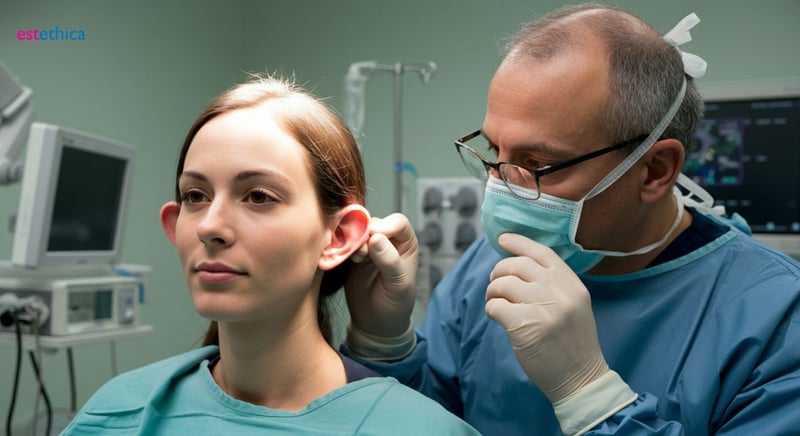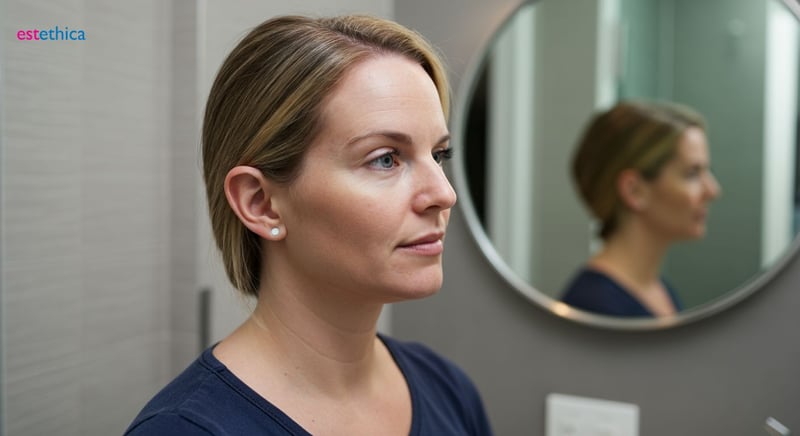Unlock Your Ideal Aesthetic: The Otoplasty Guide
Transform your appearance with expert otoplasty solutions, crafted for personalized care and impressive results.
Welcome to our comprehensive guide on otoplasty, more commonly known as ear reshaping surgery. Ideal for those seeking aesthetic and functional enhancements, otoplasty can address a variety of concerns related to ear appearance. Dive into this guide to explore the nuances of ear surgery, understand candidacy requirements, and discover both surgical and non-surgical correction options.
Otoplasty Unveiled: What is Ear Reshaping Surgery?
Understanding the Basics of Otoplasty
Otoplasty, commonly known as ear reshaping surgery, is a transformative procedure designed to correct deformities, adjust the size, or improve the positioning of the ears. This surgery is highly sought after for its ability to enhance facial symmetry and self-esteem. It can address a variety of concerns, from overly protruding ears to structural abnormalities present from birth or resulting from injury. The procedure is meticulously tailored to meet the unique needs and aesthetic goals of each patient, with a focus on achieving natural-looking results that harmonize with their overall facial features. Esthetica Global specializes in Otoplasty.
Common Reasons for Considering Otoplasty
- Correcting Overly Protruding Ears: Otoplasty is often performed to set back ears that stick out too far from the head, creating a more balanced and proportionate appearance.
- Addressing Ear Asymmetry: The procedure can correct differences in size, shape, or position between the two ears, resulting in a more symmetrical and harmonious look.
- Repairing Congenital Ear Defects: Otoplasty can effectively address a range of birth defects affecting the ears, such as constricted or abnormally shaped ears.
Patients seeking ear reshaping surgery often hope to improve their confidence and overall appearance. Otoplasty, or cosmetic ear surgery, offers a solution for individuals who may have felt self-conscious about their ears throughout their lives. By reshaping the ear cartilage, this procedure helps to bring the ears into better proportion with the head and face. The ideal candidates are those with realistic expectations and a clear understanding of what the surgery can achieve.

Ear Pinning Procedure: Candid Before & After Expectations
Realistic Expectations for Otoplasty Outcomes
Ear pinning, also known as pinnaplasty, is a nuanced form of otoplasty aimed at repositioning prominent ears closer to the head. While the procedure can yield substantial improvements in appearance and self-confidence, it's vital for patients to approach it with grounded expectations. The objective is to enhance facial harmony, not to achieve an unrealistic ideal of perfection. The ultimate result should complement the individual's unique facial features, and this is why Esthetica Global prioritizes a customized approach to every ear surgery.
Achieving the Best Results with Otoplasty
- Detailed Consultation: A thorough discussion with the surgeon about goals, concerns, and realistic outcomes is essential. This helps align patient expectations with what can be achieved through ear reshaping.
- Customized Surgical Plan: Each surgery should be tailored to the individual's ear anatomy and desired aesthetic, ensuring a natural and balanced look. Esthetica Global's skilled surgeons carefully sculpt ear cartilage.
- Focus on Natural-Looking Contours: The goal is to create a subtle, harmonious improvement that enhances overall facial aesthetics rather than a dramatic, artificial change.

Beyond Surgery: Exploring Non-Surgical Ear Correction Options
Exploring Temporary Ear Adjustments
For individuals seeking alternatives to surgery, non-surgical ear correction offers several options, each with its own set of benefits and limitations. Ear molding, particularly effective in infants, uses specialized splints to gently reshape the cartilage, capitalizing on its pliability during early development. This method can achieve lasting symmetry without invasive procedures. Adult options, while more limited, include injectable fillers to correct minor asymmetries. Although these non-surgical methods may not produce results as permanent as surgical otoplasty, they provide temporary solutions for those desiring subtle enhancements. Esthetica Global offers consultations to explore these options, and determine the best pathway for your needs.
Non-Surgical Ear Correction Methods
- Ear Molding for Infants: This involves using adhesive splints to reshape an infant's ear cartilage within the first few months of life, leveraging its natural malleability.
- Fillers for Minor Asymmetries: Injectable fillers can be used in adults to add volume and improve symmetry in cases of slight ear deformities or imperfections.
- Observation and Monitoring: For some, simply monitoring the ear's development and considering surgical options later may be a suitable non-surgical approach.

Otoplasty Recovery: Tips for Adults and Ideal Timing for Teens
Essential Aftercare Following Otoplasty
Recovery from otoplasty is a crucial phase influencing the surgery's success. It typically spans several weeks, varying among individuals. Adults can usually resume their normal activities within a week, while teenagers benefit from scheduling their surgery during school breaks. Adhering to the surgeon's guidelines is vital for optimal healing and results. This includes wearing protective headbands to minimize swelling and support the newly shaped ears. Avoiding strenuous activities like heavy lifting or intense sports is also recommended to prevent complications. Regular follow-up appointments with your surgeon at Esthetica Global ensure that the healing process is progressing as expected, with complete results gradually becoming visible over a few months.
Key Steps for Otoplasty Recovery
- Protective Headwear: Wearing a headband as directed by your surgeon helps reduce swelling and provides support to the ears as they heal. This is particularly important in the initial weeks following surgery.
- Activity Restrictions: Avoiding strenuous activities minimizes the risk of trauma to the ears and ensures proper healing. Activities like contact sports should be avoided for several weeks as advised by your surgeon.
- Follow-Up Appointments: Attending all scheduled follow-up appointments allows your surgeon to monitor your progress and address any concerns. This helps in achieving the desired outcome of the ear reshaping.
Proper care and attention during this period ensures long-term satisfaction with the results of the ear surgery.
Precision Ear Reshaping through Customized Otoplasty Techniques
Enhanced Patient Recovery and Satisfaction Through Comprehensive Otoplasty Aftercare
Frequently Asked Questions
What is Otoplasty or Ear Reshaping Surgery and who is it for?
What realistic expectations should I have for the ear pinning procedure?
What non-surgical options are available for ear correction?
What are the key steps in otoplasty recovery for adults and teens?
Achieve your aesthetic goals with estethica's personalized treatment plans and world-class expertise - discover your ideal transformation today.
📞 Get Your Free Consultation!